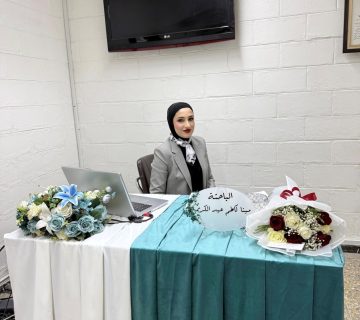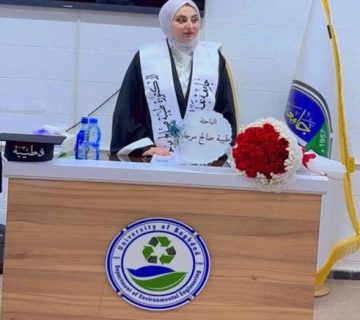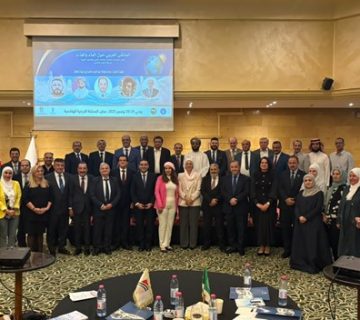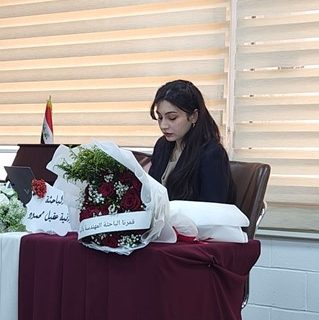The College of Engineering at the University of Baghdad witnessed the public defence of master’s student Yousif Zaid Salim from the Department of Water Resources Engineering for his thesis entitled:
Hydraulic Analysis and Simulation of Meandered River with Groynes
The defence was held on Wednesday, 4/6/2025, in Dijla Hall at the Department of Water Resources Engineering.
The examination committee was composed of Prof. Dr. Riyadh Zuheir Jwayed as Chair, and members Prof. Dr. Qasim Hameed Jallout, Dr. Mohammed Rashid Thahir (Lecturer), under the supervision of Prof. Dr. Haidar Abdul Ameer Khudair.
The main objectives of this study were:
- To investigate flow behaviour in meandering channels with varying bend angles (45°, 90°, and 180°) under idealised geometric conditions using a two-dimensional numerical model.
- To assess the impact of groyne shape (straight vs curved) on velocity distribution and turbulence levels along channel banks, and to determine the optimal shape and length that enhance hydraulic stability and reduce erosion risks in meander bends.
- To evaluate the performance of groynes in protecting riverbanks under different meander conditions by simulating flow in idealised channel models that represent natural meandering rivers.
- To apply the developed model to a real case study to verify its accuracy and provide recommendations for suitable groyne configurations for practical implementation.
The study results showed that curved groynes are more effective than straight ones in improving velocity distribution and reducing high-velocity zones along the channel banks, especially in large bend sections such as the 90° curve. Curved groynes were observed to reduce flow velocity at the outer bank and diminish vortex zones, thereby enhancing the efficiency of bank protection against erosion. The HEC-RAS model proved effective especially after calibration, using laboratory data—as it accurately represented hydraulic behaviour. When applied to a real case study in the Doura area of the Tigris River, the model demonstrated reliable performance, confirming its suitability for analysing and designing flow-regulating structures in meandering rivers.
Based on the research conducted in this study, the following recommendations were made:
- It is recommended to use curved groynes in river sections suffering from erosion on the outer bank, as results confirmed their effectiveness in reducing flow velocity and vortex formation, thus improving flow control in those areas.
- It is advised to expand the current analysis to include three-dimensional hydraulic modelling to gain a more accurate understanding of vertical flow structures and secondary currents in meandering channels.
Following the scientific discussion by the members of the examination committee and after hearing the researcher’s defence and evaluating the thesis, the student was awarded a master’s degree in water resources engineering with distinction.








